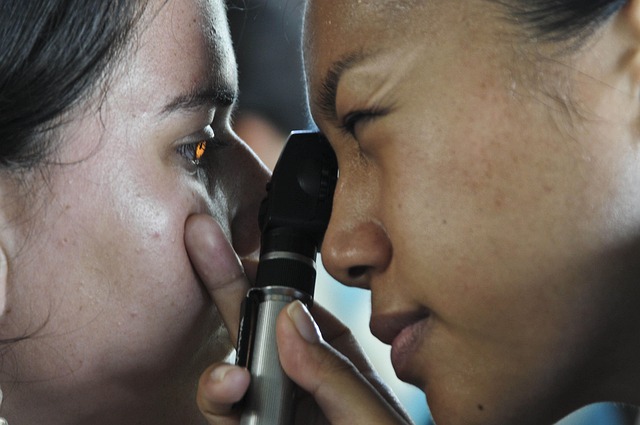Why Blurry Vision Occurs: Recognizing Common Causes and Early Signs
Blurry vision can arise suddenly or develop gradually, and it may signal a straightforward refractive issue or a more complex medical condition. Understanding common causes and early signs helps people recognize when a change in eyesight requires evaluation. This overview explains typical reasons for blur, how symptoms differ, and which professionals and tests can clarify a diagnosis.

This article is for informational purposes only and should not be considered medical advice. Please consult a qualified healthcare professional for personalized guidance and treatment.
What eye conditions cause a blur?
A range of eye problems can produce a blur in vision. Refractive errors such as myopia, hyperopia, and astigmatism cause difficulty focusing and are commonly corrected with lenses or glasses. Cataracts scatter incoming light and blur vision as the lens becomes cloudy. Retinal conditions like macular degeneration or diabetic retinopathy reduce central or overall clarity. Dry eye disease, corneal abrasions, or infections alter the eye’s surface and cause intermittent or persistent blur. Each of these eye conditions has distinctive symptoms and progression patterns that influence assessment and treatment choices.
How do symptoms guide diagnosis?
Patterns of symptoms provide key clues for diagnosis. Sudden blur, especially when accompanied by flashes, floaters, or vision loss in one eye, may indicate retinal detachment, vascular events, or acute inflammation and requires prompt evaluation. Gradual, bilateral blur often suggests refractive changes, cataract development, or chronic retinal disease. Associated signs such as pain, redness, headache, double vision, or light sensitivity narrow diagnostic possibilities. Eye care professionals use visual acuity testing, slit-lamp examination, intraocular pressure measurement, retinal imaging, and sometimes blood tests or imaging studies to reach an accurate diagnosis.
When to consult optometry or ophthalmology?
Optometry and ophthalmology have complementary roles in eye care. Optometry typically addresses primary vision concerns: routine vision exams, refraction, prescribing glasses or contact lenses, and managing some chronic eye conditions. Ophthalmology combines medical and surgical expertise for eye diseases that may require advanced diagnosis or procedures, such as cataract removal, retinal treatment, or glaucoma surgery. If an optometrist identifies signs of complex disease or urgent pathology, referral to an ophthalmologist is standard. Local services can vary, so patients often start with an optometrist for routine symptoms and seek ophthalmology for specialized care.
What role do lenses, glasses, and surgery play?
Corrective lenses and glasses are first-line solutions for refractive blur, providing immediate improvement in clarity when prescriptions match visual needs. Contact lenses offer alternatives for certain prescriptions but require proper fitting and hygiene. For structural causes of blur, surgery may be indicated: cataract extraction restores transparency of the lens, and refractive procedures (like LASIK) alter corneal shape to reduce dependence on glasses. Some retinal or corneal disorders also require surgical or procedural interventions. Decisions between lenses, glasses, and surgery depend on diagnosis, overall eye health, patient goals, and risk assessment.
When is neurology involved?
Neurological causes can produce blurred vision when the visual pathways, optic nerve, or brain regions that process sight are affected. Optic neuritis, often linked to autoimmune conditions, presents with pain and vision blur and may prompt neurology referral and MRI imaging. Strokes, brain tumors, multiple sclerosis, and certain migraines can cause transient or lasting visual disturbances, double vision, or field loss. When visual symptoms accompany weakness, numbness, balance problems, or altered mental status, coordination between ophthalmology, optometry, and neurology helps determine whether neurologic imaging or specialist evaluation is required.
How can therapy, rehab, and prevention help?
Beyond corrective optics and surgery, vision therapy and ocular rehabilitation can benefit patients with binocular vision disorders, certain neurological impairments, or persistent visual symptoms after injury. Vision therapy involves structured exercises to improve eye coordination and visual processing; ocular rehab supports adaptation to vision loss through strategies and assistive devices. Prevention focuses on controlling systemic risk factors (for example, diabetes and hypertension), UV protection, regular eye exams, and workplace or home ergonomic measures to reduce eye strain. Early detection and management of chronic conditions are central to limiting progression and preserving functional vision.
Recognizing the pattern, speed, and accompaniments of blurred vision provides important information about likely causes and appropriate evaluations. Clear documentation of symptoms, timely assessment by eye care professionals, and coordinated medical care when neurologic or systemic disease is suspected all contribute to accurate diagnosis and targeted treatment. Identifying early signs often improves options for preserving or restoring functional vision.






